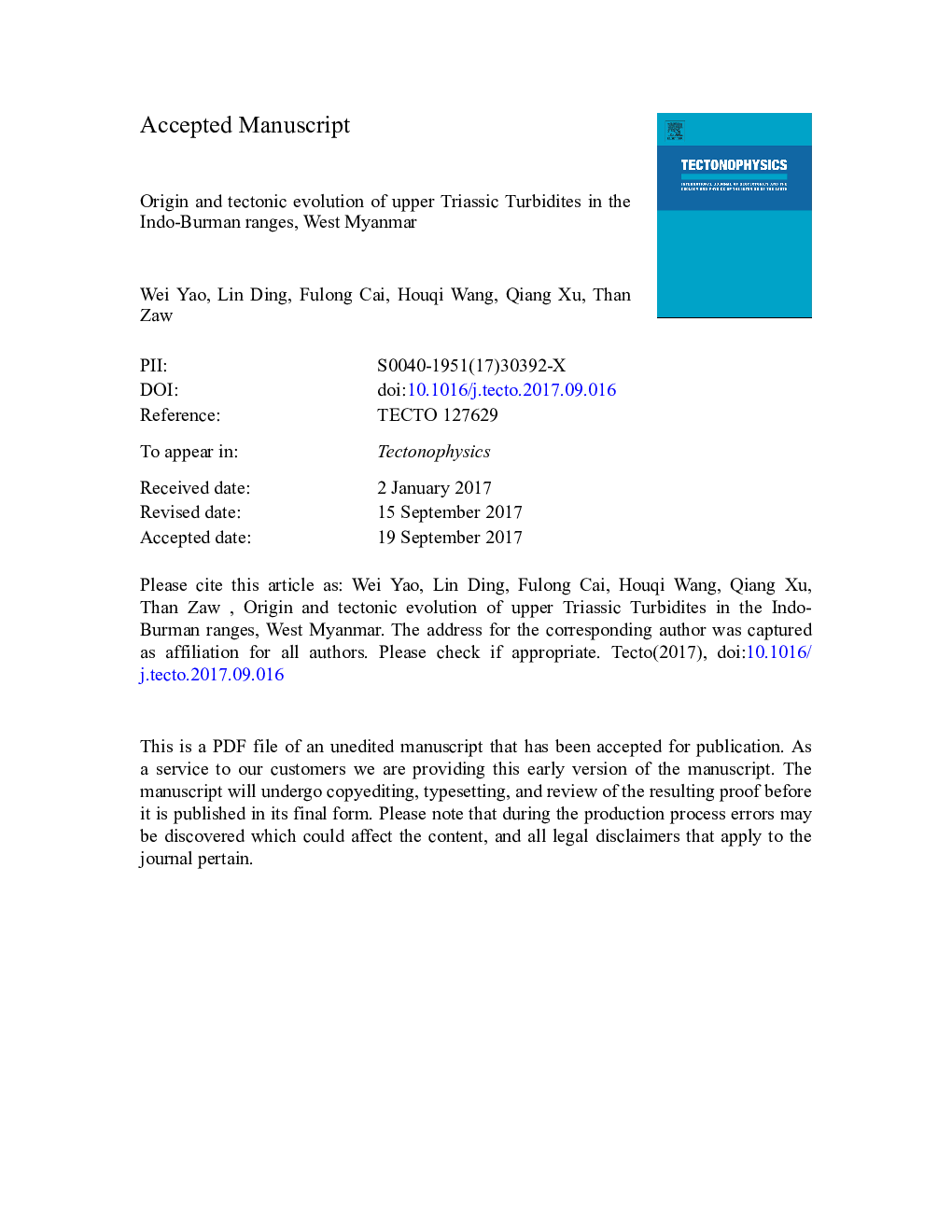| کد مقاله | کد نشریه | سال انتشار | مقاله انگلیسی | نسخه تمام متن |
|---|---|---|---|---|
| 5781440 | 1636688 | 2017 | 33 صفحه PDF | دانلود رایگان |
عنوان انگلیسی مقاله ISI
Origin and tectonic evolution of upper Triassic Turbidites in the Indo-Burman ranges, West Myanmar
دانلود مقاله + سفارش ترجمه
دانلود مقاله ISI انگلیسی
رایگان برای ایرانیان
موضوعات مرتبط
مهندسی و علوم پایه
علوم زمین و سیارات
فرآیندهای سطح زمین
پیش نمایش صفحه اول مقاله

چکیده انگلیسی
The Pane Chaung Formation is exposed in the Indo-Burman Ranges, and has been involved in collision between the Indian Plate and West Burma Block. However, controversies exist over the provenance and paleogeographic reconstruction of the Pane Chaung Formation. This study presents new petrographical and detrital zircon UPb ages and Hf isotopic data from the Pane Chaung Formation in Rakhine Yoma and Chin Hills, west Myanmar. The depositional age of the Pane Chaung Formation is Late Triassic, indicated by the Carnian-Norian Halobia fossils and maximum depositional ages between 233.0 ± 2.5 Ma and 206.2 ± 1.8 Ma. Upper Triassic sandstones contain 290-200 Ma detrital zircons, εHf(t) values of â 6 to 11 and TDMC of 1.6 to 0.6 Ga, interpreted to be derived from West Papua region. The most abundant zircon age population of 750-450 Ma is derived from Pan-African orogenic belts in Australia. Zircons of 1250-900 Ma age were derived from the Grenvillian orogen in Australia. Archean zircons are interpreted to be derived from the Yilgarn and Pilbara cratons in Western Australia. Detrital zircon ages of the Pane Chaung Formation are distinct from similar aged strata in Indochina and Sibumasu, but comparable to NW Australia (Carnarvon Basin) and Greater India (Langjiexue Formation). It is suggested that the Pane Chaung Formation was deposited in a Late Triassic submarine fan along the northern margin of Australia.
ناشر
Database: Elsevier - ScienceDirect (ساینس دایرکت)
Journal: Tectonophysics - Volume 721, 28 November 2017, Pages 90-105
Journal: Tectonophysics - Volume 721, 28 November 2017, Pages 90-105
نویسندگان
Wei Yao, Lin Ding, Fulong Cai, Houqi Wang, Qiang Xu, Than Zaw,